In this article, we take a closer look at the bag-building mechanic used in board gaming and give you a list of the 10 best bag-building board games on the market in 2023.
What is a bag-building board game?
A board game where you’re accumulating resources (tokens or cubes) in your (or a shared) bag to be used at a later stage and randomly drawn out (that’s why it’s important the items are all shaped the same).
Appeal of bag-building
Similar to deck building, this is a mechanic that allocates probabilities for items being selected, depending on the content of a bag, based on the type and number of items in it.
The main appeal of the bag building mechanic is in the excitement of the unknown – what will you draw out next, will it be the item you need, and why it isn’t the one expensive item you tried so hard putting in?
Compared to deck building, its main advantage is the ease of handling and shuffling. But the bag items can’t hold too much information, therefore the bag ingredients are usually some sort of resource, while cards are used when the gameplay demands more advanced actions and descriptions from the items.
The ease of shuffling also means that the items are more “thoroughly randomized”, while also giving players the illusion that they can affect the draw since they reach in and hand-pick an item.
In a deck of cards, you are forced to take the top card. Even though the shuffle is random and you don’t know what it is, it is that perceived feeling that this is the card that you are stuck with that gives players a deterministic feel about that mechanism. In bag building, it’s your own fault. Pulled out the wrong token? Well, why did you take it then? 🙂
Disadvantages of bag-building
As for the disadvantages of bag building, there is usually less strategic planning in these games, because it’s very hard to remember and control what items went in the bag or still remain in there.
This can be mitigated, though. As the items from the bag are removed, they can be set aside for good, temporarily set aside, or immediately returned to the bag, depending on how much chance the designer chooses for a game. Usually, designers use these techniques to lower the randomness, therefore allowing the players more control over the contents of their bags.
For example, the cubes in Clank! represent players’ health and are permanently removed as they are drawn out. In Quacks of Quedlinburg, the ingredients for your potions are removed one by one, only to be returned to the bag at the end of the round, while in Altiplano the drawn-out resources are temporarily stored in a container and are only returned when your bag is fully depleted.
Now that we learned about the base characteristics it’s time to look at some examples. We have selected what we believe are the Top 10 Bag Building bard Games currently on the market.
If you click on an affiliate link, it will take you to the Amazon store. If you then buy something, I will earn a commission – I am a member of the Amazon Associates program, as well as others.
10. Citta-Stato
(1-4 players, medium complexity, 60-90 minutes)
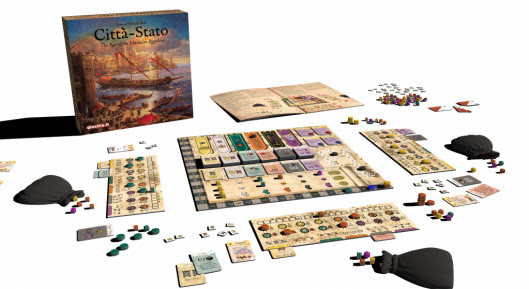
While only a handful of city-states remain to this day, historically, this was quite a popular political arrangement. From ancient Greek states (surely you’ve heard about the Athens-Sparta rivalry) to medieval Italian states such as Genoa or Venice.
In Citta-Stato (which is Italian for city-state) you represent one such state from the 12th century. There are several asymmetrical cities available to players, who compete by gaining military, commercial, and political prestige.
The game lasts for seven rounds and in each round, you draw out cubes from your bag, which represent different available actions. Actions that help to develop not only your city-state but also your bag for future rounds. By carefully building your bag, you specialize your city-state, depending on whichever actions you plan to take in the future.
9. Automobiles
(2-5 players, light-medium complexity, 45-75 minutes)
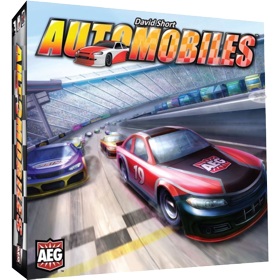
If you hadn’t guessed based on the cover picture, this game is about racing cars in circles. So, the victory conditions are quite clear – be the first to cross the finish line. You can decide on how many laps to run and you can even simulate a season by playing several races in succession.
So far pretty standard stuff. What makes Automobiles interesting is that they run on … cubes. Yep, that’s right, you’ll draw cubes of various colors out of your bag and then place them on the corresponding colors on the track, thus moving your car forward.
But you shouldn’t spend all your cubes on moving – if you save them, you can spend them on buying new cubes and thus building the bag to your liking. Of course, the valuable, “higher gear” cubes are also more expensive to purchase, so you’re always in a dilemma.
On top of that, there are cubes that allow you to manipulate other cubes, giving you extra flexibility. The position on the track is also very important – you need to have the right colored track in front of you when you draw a cube of that color. But don’t be too aggressive on the track, or you’ll fill your bag with nothing but useless “wear” cubes!
8. Coffee Roaster
(1 player, light-medium complexity, 10-30 minutes)
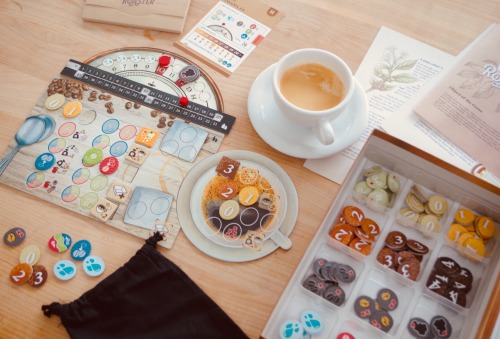
If you want a board game with a unique theme, it doesn’t get much more original than coffee roasting. In this game, you try to produce a perfect blend of coffee. The only thing missing is the option to drink the newly-made coffee!
You start out by selecting a blend you’d like to roast by placing specific tokens in the roaster – your bag. The roasting of the beans is simulated by drawing out tokens that must increase in the roast level before they are returned to the bag.
As the roaster gets hotter, you draw out more and more tokens each round and it’s up to you to decide when to stop to avoid over-roasting. Of course, you have several tools at your disposal on your roast board that help you control this process and manipulate the tokens.
When you think the contents of the bag are done, you can go for a test cup – you draw out ten tokens, which are then scored according to how close to the target recipe they are. As this is a solo-only game, you’ll then be rewarded with a title, acknowledging your “Meister” roasting skills.
7. Hyperborea
(2-5 players, medium complexity, 50-150 minutes)
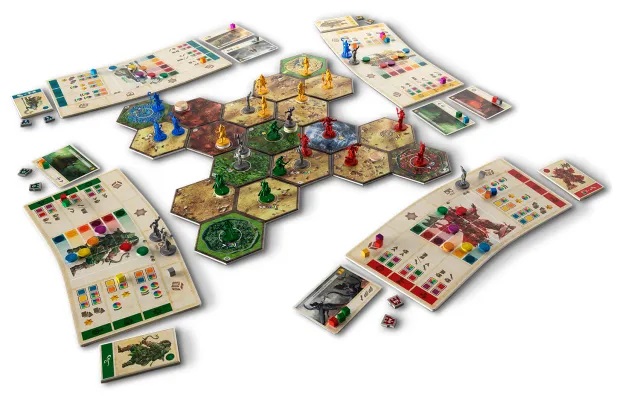
Hyperborea is a mythical land once home to a thriving civilization that destroyed itself by being greedy and digging for the magic crystals insatiably. Luckily, a few wise mages managed to contain the destruction inside a shield, thus allowing small communities on the outskirts to survive.
Centuries later, the survivors formed six factions with different beliefs and social systems, living in fragile peace. But when the shield suddenly collapses, opening the way to long-forgotten secrets and riches of Hyperborea, all six kingdoms seek to enter and explore the lost ruins and artifacts.
You play as the leader of one of those distinct factions. Your knowledge of trade, warfare, and research is limited, but by exploring Hyperborea, you can advance in all those aspects. You will recruit more units, helping you explore faster and be a larger threat to others, expand your territory, conquer cities, learning technologies, and also battle with other players.
Hyperborea is a civilization game that is run by a bag of action cubes. There are several colors: war, trade, movement, building, knowledge, and growth. Additionally, there are corruption cubes, which are a dead weight in your bag and you want to avoid them.
With each turn, you will draw three cubes and place a certain combination of them on your board to perform various actions or activate technologies. Of course, there are several mechanisms in place for adding different cubes to the bag and you can focus on any one area or do a little bit of everything.
Deciding how to build your bag in accordance with the situation on the map and what the other players are doing is one of the key charms of Hyperborea.
6. Wonderland’s War
(2-5 players, medium complexity, 45-125 minutes)
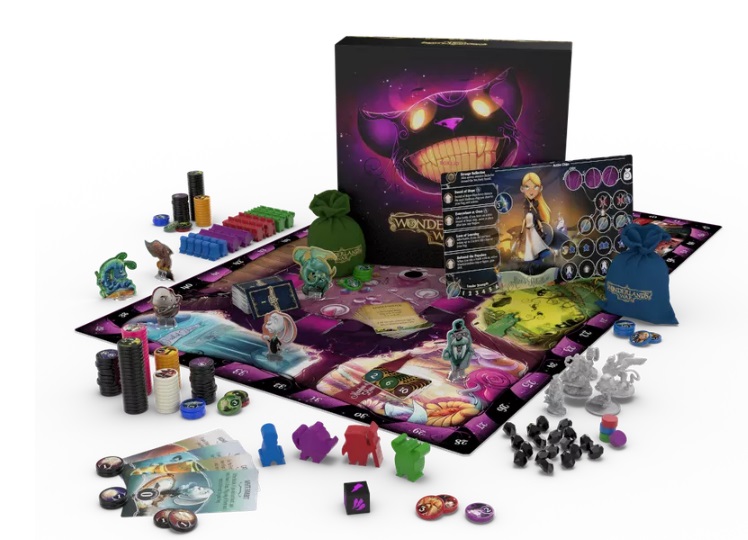
While Alice’s Adventures in Wonderland, the original novel by Lewis Carroll, was published way back in 1865, its wacky theme continues to spark the imagination of movies, video games, and board game producers.
The world that Alice discovers through the looking glass is the world Wonderland’s War uses as a setting for a twisted board game. The world is at war, people are going mad, and Alice, Mad Hatter, Red Queen, Jabberwock, and Cheshire Cat gather at Hatter’s tea party to muster their armies before going to battle. I wasn’t kidding when I told you the setting is twisted!
The gameplay is split into two phases. First, your character moves around the tea party rondel, collecting chips that go to their bag. When this is done, players will move their attention to the map, where they will have various goals and quests to fulfill. But more often than not, other players and their units will be in the way, leading to battles, the highlight of Wonderland’s War.
The battles are fought by drawing out chips from your bag, representing your military strength. But there are several types of chips and synergies between them, special abilities, as well as madness chips that end your battle abruptly. Will you draw the right chip?
There’s a strong element of push-your-luck involved, but also plenty of strategy. For instance, you might want to throw one fight to preserve your strong chips for a clash on the part of the map that is more important to you. Goals and quests grant victory points, and after three rounds, the game ends.
Wonderland’s War’s battles and chip drawing are tremendous fun, but the larger area control game is also a strong trump, giving those moments of pushing your luck a larger, big-picture meaning. Of course, don’t forget the bizarre theme.
5. War Chest
(2 players, light-medium complexity, 30 minutes)
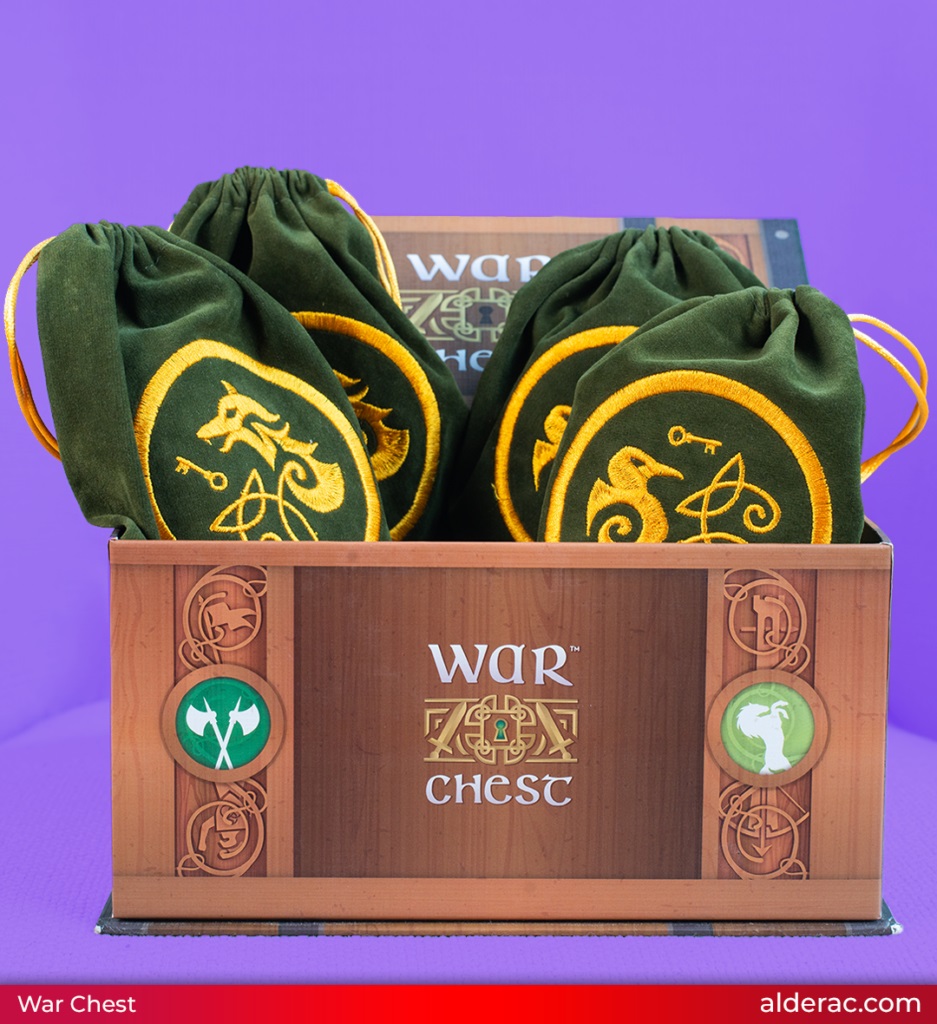
You may remember War Chest if you read our Best Abstract Board Games article. It’s a two-player wargame set on a hexagonal battlefield. Thematically, it’s not particularly strong, but the units and battles are somewhat inspired by medieval warfare. For instance, there are knights, spearmen, archers, and siege engines, among others.
Each player has a pool of unit chips that they draw from their bag and use to place new units on the board, moving, attacking, and adding new chips to the bag. The system is trimmed of ballast and instantly easy to understand.
Every unit type unit has its own movement rules, battle, and other abilities. The peculiarities are thematic (i.e. cavalry can move more hexes) and only a good combination of various units will be strong enough to win a battle.
The objective of each battle is to control key points on the board and/or eliminate all of the enemy units. The gameplay is fast, making this an ideal entry point for war game enthusiasts.
4. Altiplano
(2-4 players, medium complexity, 60-120 minutes)
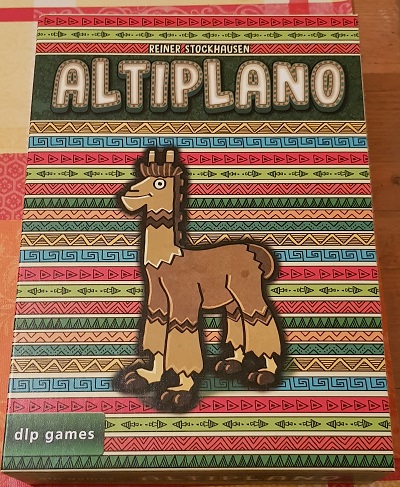
Welcome to the South American Andes where people have lived off the scarce land for centuries. From gathering base resources like cacao, fish, ore, wood, stone, and alpacas, to transforming them into more refined resources such as jewelry, wool, cloth, and glass.
You play as a leader of one such tribe and you have been tasked to make your village most prosperous. You’ll aim to fill your storehouse with the most luxurious resources, fulfill contract orders, and complete missions.
Altiplano is all about resource management, timing, and having the right resources in your bag. Every turn, you’ll draw a certain number of resource tokens out of it and then you’ll plan how to best transform them into something more valuable. This is done by placing them on locations on your player board, while also making sure your pawn is at the right location on the board.
Only if your guy is at the market and you have put a stone token into the market slot will you be able to sell stone for money. This tactical planning that you do every turn offers a solid challenge and is highly enjoyable and satisfactory.
But don’t forget about the big picture. What missions have you received in this game and which orders should you go for? This will dictate how you expand your player board with new action slots and also how you build your bag. Should you go heavy on ore or maybe focus on cloth?
Altiplano has a lot to offer. It’s fairly easy to teach, it offers a lot of strategic depth with many paths to victory. On top of that, its appearance is colorful and friendly, and the game looks stunning on the table.
3. Orleans
(2-4 players, medium complexity, 90 minutes)
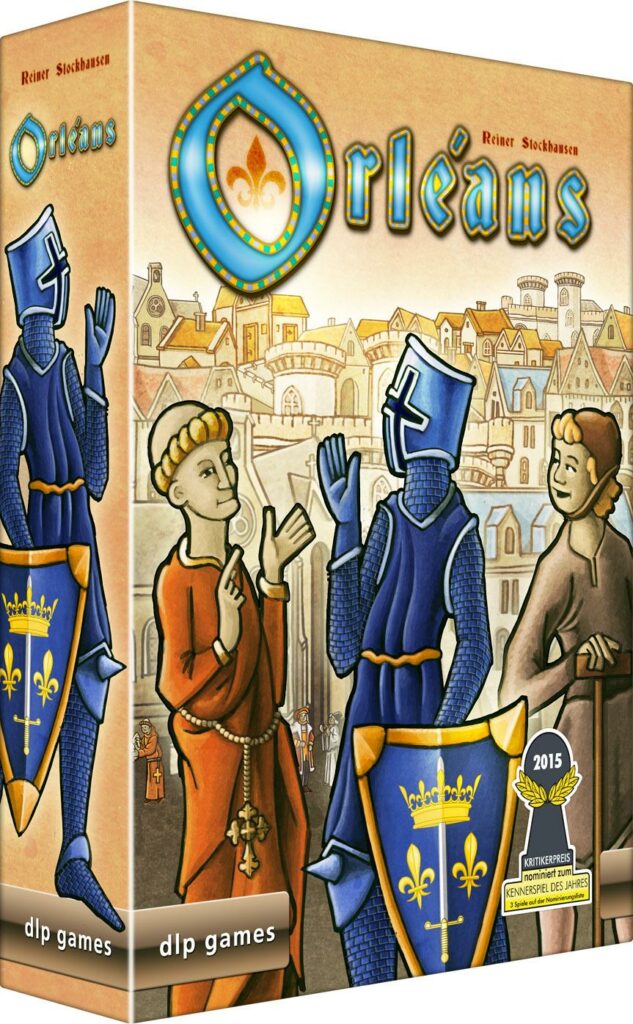
Orleans is Altiplano’s older brother and the games have a lot of things in common. One thing that they differ in is the theme. Orleans is set in the medieval city of Orleans with its surroundings. Each player assumes a role of a merchant with the goal of beating other merchants in prestige.
Players will send their workers out to different locations to collect more workers for their bags. This time, the tiles represent farmers, boatmen, knights, craftsmen, scholars, traders, and monks. Planning on where to send these workers is very similar to Altiplano and also highly enjoyable.
But just sending out workers to collect more workers seems kinda pointless – there’s more to Orleans than that. You can also use your workers to develop your personal board, trade resources, travel to other towns around Orleans, and complete specific objectives.
All these activities will bring you closer to victory. As in Altiplano, carefully managing what you put in your bag and balancing this with the objectives and your overall strategy is key. Orleans is an excellent game, and together with Altiplano at the pinnacle of strategic bag builders.
2. Clank! (series)
(2-4 players, light-medium complexity, 30-60 minutes)
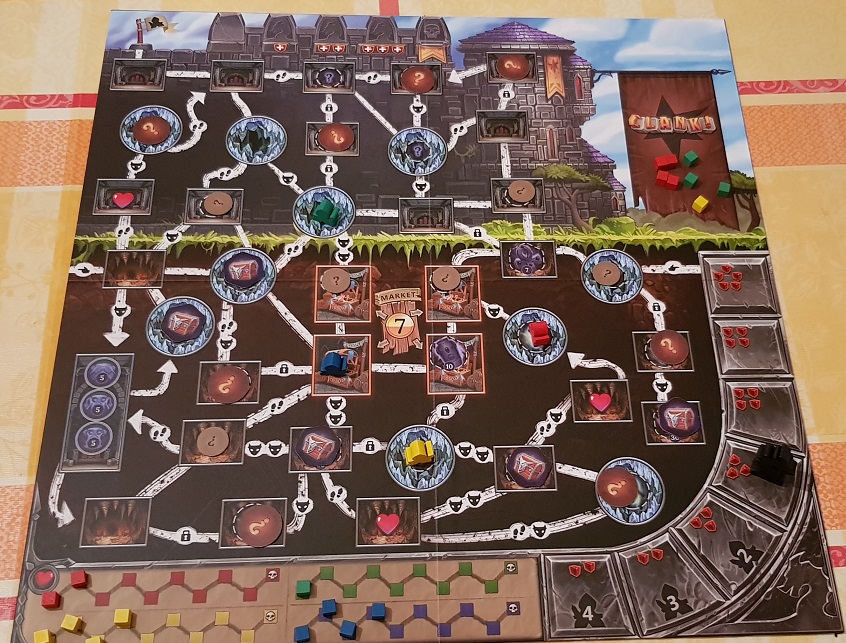
The next game on our list is very different. Primarily a deck-builder, Clank! uses bag-building as a side mechanic, together with a strong emphasis on push-your-luck. The setting draws from fantasy, but the game doesn’t take itself seriously and is more of a parody than anything else. Which comes out great.
The dragon is safeguarding a treasure and you play as one of the burglars of his underworld. Grab as much loot as possible, but get out before you generate too much noise (clank) and the dragon gets you.
You move from location to location deeper and deeper, collecting artifacts and other items on the way. Your actions are dictated by a deck of cards. You draw five of them each turn and the icons on them indicate how far you can move, whether you can fight any enemies on the way, and how many new cards you can purchase.
Purchasing new cards is a major appeal of Clank!. There’s a lot of variety and you can customize your deck exactly as you want, making your character stronger and more potent as the game progresses.
Now we get to the bag-building aspect. As you’re looting, you’ll generate more and more clank, which is represented by cubes of your color. The cubes of all players go into the same bag. Then the dragon, who’s getting angrier and angrier as you snatch his favorite artifacts in front of his nose, will start attacking you more and more frequently and you’ll have to draw those cubes out.
If a cube of your color gets drawn, that’s one hit point of damage to you. You only start with 10 HP, so every cube hurts.
This is what provides Clank! with such phenomenal pacing. The game starts out slow and you seem safe. Then, as the game and your greed progress, nail-biting decisions will have to be made. Your health is getting low. Do you try to play it safe and get out now or take a risk and try to get one more artifact?
If you can’t get out in time, you lose the game, so you’re always dancing on the knife’s edge. Heroic escapes and heroic demises, Clank! knows how to ignite a table. There are several editions available. From the original Clank!, to sci-fi In! Space, to the latest Catacombs. All are excellent, but I recommend Catacombs, as it adds an extra layer of exploration.
1. The Quacks of Quedlinburg
(2-4 players, light-medium complexity, 45 minutes)
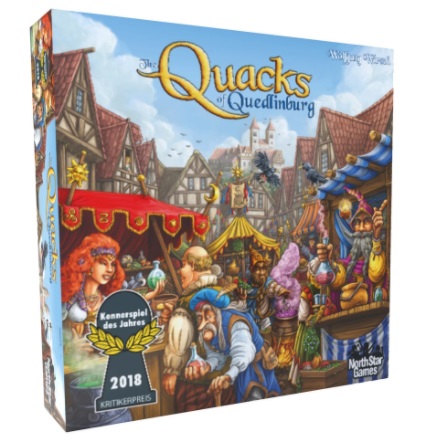
If the title of our best bag-building board game seems wacky – that’s because the whole premise of the game is hilarious. You’re playing as a quack, someone who’s trying to mix a potent potion that will restore youth and energy and sell it to the masses at a medieval fair.
To brew your potion, you won’t stop at any ingredients. Rats tails, herbs, spices, beetles, you will try everything. But beware – too many explosive ingredients and the whole batch will go up in flames, leaving you with nothing.
The gameplay boils down to drawing ingredients out of your bag one by one until you decide to stop (or your potion explodes). You can draw out good ingredients – those that will advance your potion along the pot, often forming useful combos. But you can also draw white, exploding chips that move you one step closer to exploding. If you draw more than seven of those, you’re bust!
As you can imagine, this produces a lot of tension when you’re nearing the boiling point, but you know you still have a couple of useful chips in the bag. Should you risk it and draw one more? And after that just one more?
Successful brews are awarded with points and money to buy new ingredients. If your potion explodes, you must give up one of those rewards. After several brews (rounds), the game ends and the points are tallied up.
The Quacks of Quedlinburg is an excellent mixture of light strategy (putting the right chips in your bag), fantastic atmosphere as people near busting, and overall accessible and friendly gameplay. Particularly recommended for families!
